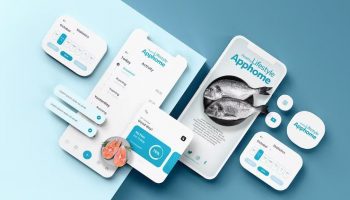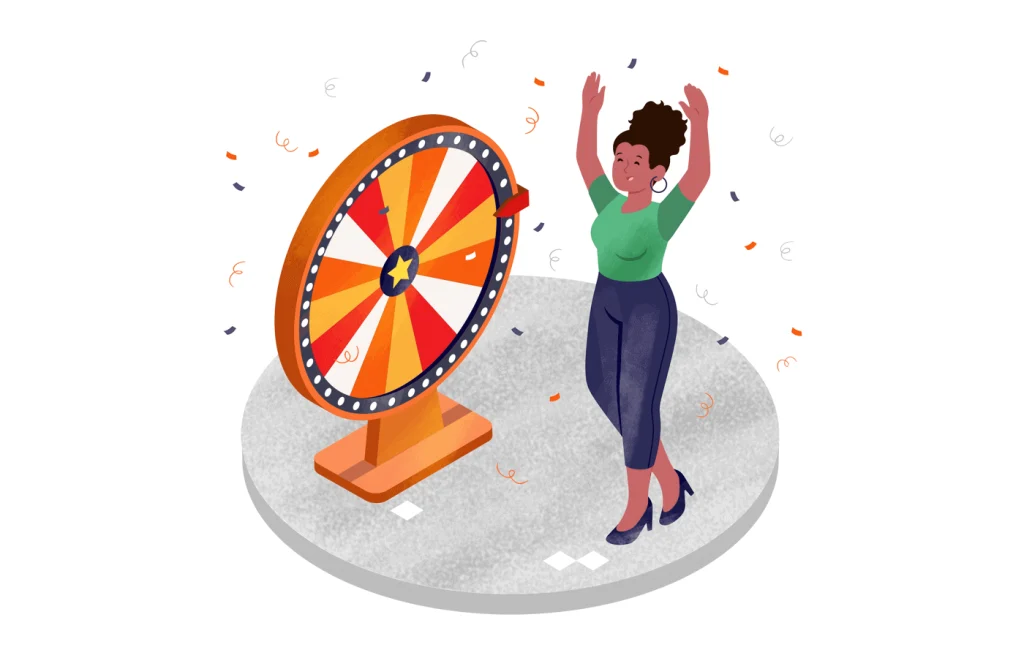Businesses constantly search for innovative methods to captivate users and enhance their interaction with websites or apps. One intriguing method that has emerged in recent years is gratifying user interactions through tools like the wheel of pop-ups. Incorporating a website pop up effectively can significantly boost email sign-ups and user engagement.
But what does it entail, and how can it augment user engagement?
What Exactly Is A Wheel Of Pop-Ups?
The wheel of pop-ups, often called “spin-to-win” pop-ups, is an interactive marketing tool commonly found on websites and e-commerce platforms. Here’s a deeper dive into its definition and how it functions:
- Interactive Digital Wheel: Visually, this tool mimics a game show-style spinning wheel divided into several sections, each offering a different reward or incentive.
- User Engagement: Visitors to the website can ‘spin’ this digital wheel by clicking on it, hoping to land a desirable reward.
- Reward Mechanism: Once spun, the wheel eventually stops at a random segment, revealing the user’s prize. This could include discounts, free shipping, bonus points, or other promotional offers.
- Data Collection Point: To spin the wheel, users must often enter their email address or complete a brief form. This ensures the reward reaches them and provides the website owner with valuable lead information.
- Customization: The wheel of pop-ups’ design, rewards, and overall theme can be customized to align with the brand’s identity and the specific campaign’s objectives.
- Limitations: To prevent misuse, businesses often limit the number of spins per user or set it as a one-time opportunity for new website visitors.
In essence, the wheel of pop-ups is more than just a game; it’s a strategic marketing tool designed to increase user engagement, capture leads, and offer tangible value to visitors, all while enhancing their online experience.
Advantages Of Wheel Of Pop-Ups
Wheel of pop-ups is more than just a playful interaction; it’s a potent tool in the arsenal of modern marketers. Here’s why it’s such a hit when it comes to driving engagement.
- Instant Gratification: In a world where users are bombarded with content, the immediate rewards that the wheel offers stand out. The possibility of winning something instantly is a huge pull for many users.
- Interactive Element: Unlike passive advertisements, the wheel of pop-ups demands user interaction. Spinning the wheel becomes an engaging activity, giving users a sense of control over the outcome.
- Enhanced User Experience: Instead of intrusive pop-up ads, a spinning wheel feels like a game, making it more acceptable and enjoyable for users.
- Increased Time on Site: Users are more likely to spend additional time on a website where they feel engaged or believe they can gain something valuable.
- Data Collection: This is a fun way to gather business user information. Most users are more willing to share their email addresses or other details when prospecting for a reward.
- Versatility: The wheel of pop-ups can be customized to fit various campaigns, from holiday promotions to new product launches, making it a versatile tool for different marketing needs.
- Social Shareability: Users who win are likelier to share their victories on social media, further amplifying the campaign’s reach.
- Feedback and Insights: Businesses can tweak the rewards based on user interaction and gain insights into what their audience values most.
- Boosts Conversions: With the right incentives, the wheel of pop-ups can push users further down the sales funnel, converting browsers into buyers.
Crafting A Wheel-Of-Popups For Enhanced Campaign Interaction
Creating an effective wheel of popups isn’t just about flashy graphics or enticing rewards; it requires a strategic approach to captivate your audience and amplify campaign engagement.
Here’s a step-by-step guide to crafting a compelling wheel-of-popups:
Determine Your Objective
Identify what you want to achieve before diving into the design. Is it lead generation? Increasing sales? Boosting newsletter sign-ups? This will guide your reward structure and the user experience.
Customize The Design
Your wheel should resonate with your brand’s colours, fonts, and overall aesthetic. A cohesive look and feel can increase trust and reduce friction for new users.
Decide On Rewards
Offer a mix of rewards, from high-value incentives to smaller ones. Ensure a balance so users feel there’s always a chance to win something valuable.
Create A Data Capture Mechanism
Consider what data you wish to collect. An email address is typically a minimum, but you should also gather names or phone numbers. Ensure transparency on how you’ll use this data to maintain trust.
Engage CTA
Ensure your call to action is clear and motivating. Instead of just “Spin Now,” consider more engaging prompts like “Try Your Luck!” or “Spin to Win Big!”.
Conduct Mobile Optimization
Many users might access your campaign via mobile devices. Ensure the wheel-of-popups is responsive and offers a seamless experience across all devices.
Make Promotion
Once live, promote your wheel-of-popups across all marketing channels from your homepage to social media platforms.
Test And Iterate
Before a full-scale rollout, test the wheel on a smaller audience segment. Gather feedback, note the interaction rate, and make necessary tweaks.
Conclusion
The wheel of pop-ups ingeniously marries entertainment with marketing, offering users a memorable experience while driving business goals. By integrating this gamified approach, businesses can transform passive browsers into engaged customers, making it a win-win for both parties. In today’s competitive digital landscape, such innovative strategies can distinguish between fading into the background and capturing your audience’s attention.
Read Also:
- Creative Design Agencies: Types and Benefits
- Top 10 Free Graphic Design Software To Use In 2023 [Updated]
- Canva – User Reviews, Pros & Cons | Graphic Designing Software




























